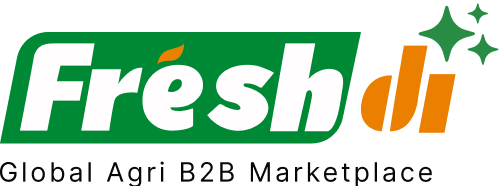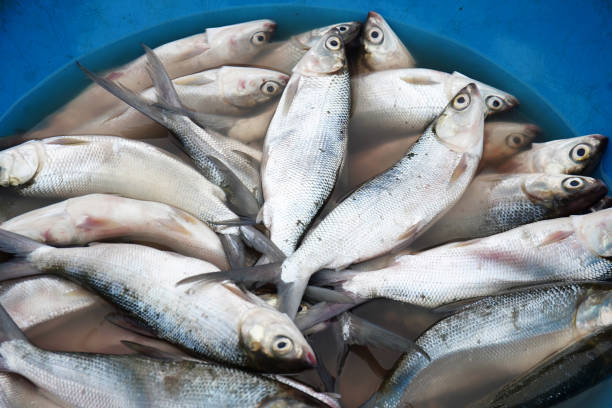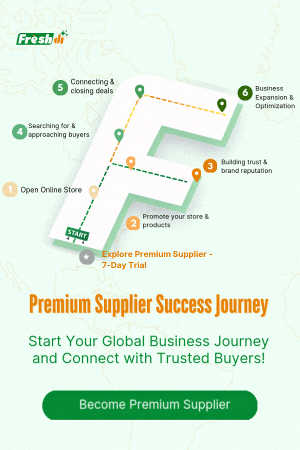Introduction – Current State of Play: The Fish Sector in Switzerland
Switzerland’s fish market is going through some serious changes — and fast. Despite being landlocked, Switzerland has a taste for fish that’s only growing stronger. But with global events shaking up supply chains and local consumers becoming more mindful about sustainability, navigating this market isn’t as straightforward as it used to be.
Recently, the country has seen new trade agreements come into play, import challenges due to logistics disruptions, and growing pressure for sustainable sourcing. Add to that a surge in health-conscious consumer behavior, and the need for businesses to stay agile has never been more important.
For companies sourcing fish in Switzerland, staying informed is no longer a luxury — it’s a necessity. Whether you’re a wholesaler, retailer, or food service provider, understanding the current market dynamics can help you avoid costly mistakes and make smarter sourcing decisions.
Deep Dive – What’s Making Headlines? Key Recent News & Impacts
Let’s break down the biggest developments shaping the fish and seafood industry in Switzerland right now.
Market Trends: Growth and Consumer Shifts
-
Market Boom: The Swiss fish and seafood market is expected to hit USD 1.62 billion in 2025, growing at an annual rate of 1.92% through 2030. (Statista)
-
Health and Sustainability: Swiss consumers are increasingly choosing seafood that’s sustainable and ethically sourced. With rising concerns about overfishing and environmental impact, demand for eco-labeled products is at an all-time high. (IMARC Group)
Supply Chain Dynamics: A Nation Dependent on Imports
-
Import Heavy: Switzerland imports around 96% of its fish and seafood. That’s a massive dependency, and one that comes with risk — especially in today’s volatile global landscape. (SwissInfo)
-
Sustainability Gap: Only 40% of imported seafood is considered sustainable. This has caught the attention of regulators and advocacy groups, who are pushing for greater transparency and cleaner supply chains. (Research Outreach)
Investment News: Aquaculture and Feed Innovation
-
Local Aquaculture Projects: Companies like Swiss Blue Salmon AG are investing big in sustainable aquaculture. Their new facility in the Swiss Alps aims to provide high-quality salmon with minimal environmental impact. (IMARC Group)
-
Feed Sustainability: The FAIRR Initiative warns that the salmon industry needs to shift toward sustainable feed options. Overreliance on wild fish stocks for feed could lead to long-term supply chain issues. (FAIRR)
Clearly, the future of fish in Switzerland is tied to how well the industry can balance demand, sustainability, and innovation.
Top 5 Verified Fish Suppliers in Switzerland – Relevant in the Current Climate
Based on current demand trends, sustainability practices, and verified buyer reviews on platforms like Freshdi, here are the Top 5 Fish Suppliers in Switzerland in May 2025:
- Claudere GmbH
- Specializes in high-quality tuna and other preserved fish products.
- Known for sustainable sourcing and reliable shipping timelines.
-
Popular among Swiss retailers and food service providers.
- A pioneer in Swiss aquaculture, offering locally farmed trout and Arctic char.
- Focuses on eco-friendly farming practices and animal welfare.
-
Increasingly favored for its low environmental footprint.
- Major supplier of imported salmon and cod from Norway and Iceland.
- Offers full traceability and MSC-certified products.
-
Strong logistics network ensures timely delivery.
- Investing in high-tech aquaculture in the Swiss Alps.
- Targets premium markets with ultra-fresh, low-impact salmon.
-
Gaining traction among health-focused consumers.
- Broad seafood portfolio including exotic and specialty products.
- Excellent reputation for quality control and supplier transparency.
- Ideal for gourmet restaurants and specialty food retailers.
Dynamic Ranking Note: Rankings like these are subject to change. Platforms such as Freshdi regularly update “Suppliers of the Month” or “Top Performers” based on real-time export performance and buyer feedback, so it’s worth checking frequently for the most up-to-date insights.
Market Navigation – Strategic Responses to Today’s Fish Landscape in Switzerland
If you’re in the fish business in Switzerland right now, here’s what you need to think about.
Rethink Risk Assessment
With a 96% import rate, any disruption in global logistics — from port closures to fuel prices — can cause major headaches. Businesses need to diversify their sourcing and consider suppliers with local or regional backup options.
Embrace Sustainable Sourcing
Sustainability isn’t just a buzzword; it’s a buying decision. Swiss consumers are putting their money where their values are. Sourcing from certified suppliers or those investing in eco-friendly aquaculture can give your brand a competitive edge.
Focus on Traceability
With growing concerns about ethical sourcing, buyers are demanding full traceability. Suppliers who can provide detailed origin and supply chain data (many of whom are listed on Freshdi) are far more likely to secure contracts.
Watch for Regulatory Changes
The Swiss government is under pressure to tighten sustainability standards. Keep an eye on labeling laws and import regulations that could affect your product lineup.
Adapt Product Strategies
Products like tuna, salmon, and trout remain top sellers, but niche markets are emerging for plant-based seafood, low-mercury options, and premium aquaculture products. Stay ahead of the curve by adapting your mix.
Conclusion – Key Takeaways for Businesses in a Dynamic Market
Switzerland’s fish market is shifting — fast. Between the rising consumer demand for sustainability, heavy reliance on imports, and new aquaculture investments, there’s a lot to keep up with.
Here’s what businesses need to keep in mind:
- The market is growing, but challenges around supply chain reliability and sustainability are front and center.
- Consumers are becoming more informed and selective, especially regarding eco-labels, animal welfare, and origin transparency.
- Investment in local aquaculture signals a potential shift in sourcing patterns — keep an eye on these trends.
- Platforms like Freshdi empower buyers by offering verified supplier data, real-time RFQ trends, and dynamic rankings to help you make smarter, faster decisions.
If you’re sourcing fish in Switzerland, staying informed isn’t optional — it’s your secret weapon.
Key Takeaways
- The Swiss fish market will be worth $1.62 billion in 2025.
- Import dependency is high; 96% of fish is imported.
- Only 40% of seafood is deemed sustainable.
- Local aquaculture investments are rising.
- Buyers are shifting toward traceable, eco-certified fish.
Buyer’s Checklist: Fish Sourcing in Switzerland (May 2025)
- ✅ Verify supplier certifications (MSC, ASC, etc.)
- ✅ Ask for full traceability documentation
- ✅ Review supplier ratings on Freshdi
- ✅ Diversify sourcing regions to mitigate risk
- ✅ Monitor RFQ updates related to sustainability trends
Future Outlook: What’s Next for Fish in Switzerland?
Looking ahead, we’ll likely see:
- More investment in local aquaculture, reducing import dependency
- Stricter regulations on seafood labeling and sustainability
- A shift in consumer demand toward specialty and eco-friendly products
- Increased use of AI-driven sourcing platforms like Freshdi for better decision-making
Platforms like Freshdi are becoming essential tools for navigating this evolving market. With real-time data, verified supplier connections, and RFQ analytics, buyers can stay a step ahead — no matter how the market shifts.
FAQs
1. Why does Switzerland import so much fish?
Switzerland is landlocked, so it relies heavily on imports to meet its seafood demand. This makes logistics and supplier selection especially crucial.
2. What types of fish are most popular in Switzerland?
Salmon, tuna, and trout are the top picks, with growing interest in sustainable and exotic options like Arctic char and barramundi.
3. How can I find sustainable fish suppliers in Switzerland?
Platforms like Freshdi list verified suppliers with certifications, traceability data, and real-time performance rankings.
4. Are there any local fish producers in Switzerland?
Yes! Companies like Swiss Blue Salmon AG and AquaSwiss Farms are investing in local aquaculture to reduce environmental impact and improve freshness.
5. What should I look for when sourcing fish in 2025?
Focus on traceability, certifications, supplier reviews, and adaptability to market changes. Tools like Freshdi can streamline these checks for you.


